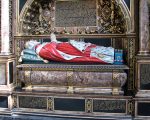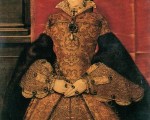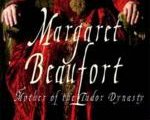
YOUR SEARCH UNCOVERED 455 RESULTS
-
19 days to listen to an interview with historian Dr Elizabeth Goldring

-
This week in history 19 – 25 January
-
Anne Seymour, Duchess of Somerset, by Conor Byrne
-
Elizabeth I’s Coronation Procession – Primary Source Accounts
-
This week in history 22 – 28 December
-
This week in history 15 – 21 December
-
This week in history 8 – 14 December
-
This week in history 1 – 7 December
-
This week in history 24 – 30 November
-
This Week in History 3 – 9 November
-
This Week in History 6 – 12 October
This week in history events for 6th to 12th October.
[Read More...] -
This Week in History 29 September – 5 October
-
This Week in History 22-28 September
-
Tudor Personality Books
-
#OTD in Tudor history – 19 November
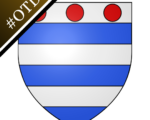
On this day in Tudor history, 19th November, Lord John Grey, youngest son of Thomas Grey, 2nd Marquess of Dorset, died naturally even though he’d once been condemned to death (1564); and poet, Catholic recusant and priest harbourer Henry Vaux died of consumption (1587)…
[Read More...] -
#OTD in Tudor history – 13 November
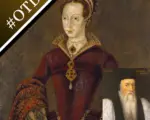
On this day in Tudor history, 13th November, mercer and member of Parliament Robert Packington was shot to death by an unknown assailant (1536); and Lady Jane Grey and her husband, Lord Guildford Dudley, two of his brothers, and Archbishop Cranmer were tried for treason…
[Read More...] -
#OTD in Tudor history – 21 October
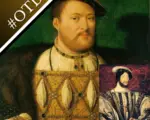
On this day in Tudor history, 21st October, Henry VIII left Anne Boleyn behind in Calais to spend a few days in Boulogne with Francis I (1532); and during the Pilgrimage of Grace, Lancaster Herald encountered a group of armed peasants near Pontefract Castle…
[Read More...] -
#OTD in Tudor history – 3 September
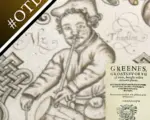
On this day in Tudor history, Elizabethan actor and famous clown Richard Tarlton died; and writer and playwright Robert Greene, who dubbed Shakespeare an “upstart crow”, died…
[Read More...] -
#OTD in Tudor history – 28 July
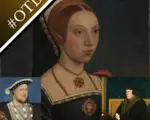
On this day in Tudor history, 28th July, Thomas Cromwell suffered a rather botched execution; Walter Hungerford, Baron Hungerford, was executed for magic and “detestable vice and sin”; and Henry VIII married his fifth wife, Catherine Howard…
[Read More...] -
#OTD in Tudor history – 13 July
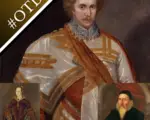
On this day in Tudor history, 13th July, the famous multi-talented John Dee was born; members of the new Queen Jane’s council were meeting with the imperial ambassadors; and poet and courtier Robert Sidney, 1st Earl of Leicester, died at Penshurst…
[Read More...] -
#OTD in Tudor history – 12 July
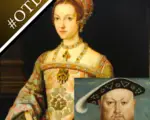
On this day in Tudor history, 12th July, Henry VIII married his sixth wife, Catherine Parr; men flocked to Lady Mary’s cause and Queen Jane made a mistake; and four Protestants were burnt at the stake in Canterbury for heresy…
[Read More...] -
#OTD in Tudor history – 7 July
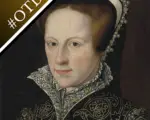
On this day in Tudor history, 7th July, Henry VIII’s eldest daughter, Mary, heard of her half-brother Edward VI’s death; Henry Peckham and John Danyell were hanged, drawn and quartered for their involvement in the Dudley Conspiracy; and William Turner, “father of English botany and of ornithology”, died…
[Read More...] -
The Men Behind the Throne: Tudor Statesmen – Online Event – Register Now
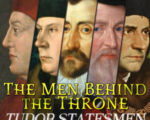
I’ve just opened registration for my forthcoming online event “The Men Behind the Throne: Tudor Statesmen”! There’s an early bird discount until 31 May and our very first zoom call discussion, which is on Thomas Cromwell, is this Friday, 17th May!
In my interactive and completely online 11-day event, which starts properly on 30th June, I’ll be joined by historians Dr Joanne Paul, Caroline Angus, Melita Thomas, Phil Roberts and Dr Hannah Coates. We’ll be delving into the captivating lives of the Tudor statesmen who shaped England’s history alongside iconic rulers like Henry VII, Henry VIII, Edward VI, Mary I, and Elizabeth I.
Through video talks and zoom Q&A sessions with speakers – where you’ll be video chatting with the historian! – you’ll gain a fresh understanding of the roles and contributions of prominent Tudor statesmen, and insights into the political landscape of Tudor England, including court intrigues, power struggles, and the dynamics between monarchs and their advisors.
[Read More...] -
#OTD in Tudor history – 26 February
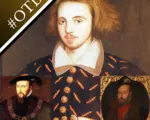
On this day in Tudor history, 26th February, George Carey, 2nd Baron Hunsdon and grandson of Mary Boleyn was born, four men were executed after being accused of conspiring with the Duke of Somerset against the Duke of Northumberland, and poet and playwright Christopher Marlowe was baptised…
[Read More...] -
#OTD in Tudor history – 21 February
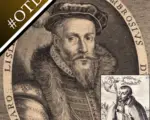
On this day in Tudor history, 21st February, Pope Julius II died; Katherine Seymour (née Grey), Countess of Hertford, was buried; Ambrose Dudley, 3rd Earl of Warwick, died, and Jesuit priest Robert Southwell was hanged, drawn and quartered…
[Read More...] -
August 24 – Thomas Howard, 1st Earl of Suffolk
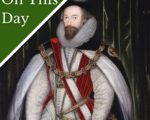
On this day in Tudor history, 24th August 1561, naval officer and administrator Thomas Howard, 1st Earl of Suffolk, was born.
Howard served Elizabeth I as vice-admiral in the 1596 Cadiz expedition and the 1597 voyage to the Azores, and as Constable of the Tower of London. He went on to have a distinguished career under James I until his fall in 1619.
[Read More...] -
July 8 – Kett’s Rebellion
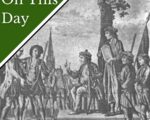
On this day in Tudor history, 8th July 1549, in the reign of King Edward VI, Kett’s Rebellion began.
Robert Kett, a Norfolk farmer, agreed to lead a group of protesters who were angry with the enclosure of common land. The protesters marched on Norwich, and by the time they reached the city walls, it is said that they numbered around 16,000.
[Read More...] -
July 13 – Some of Queen Jane’s councillors begin to feel uneasy
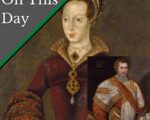
On this day in Tudor history, 13th July 1553, while the queen’s father-in-law, John Dudley, Duke of Northumberland, was preparing to leave London to apprehend the late Henry VIII’s daughter, Mary, members of Queen Jane’s royal council were meeting with the imperial ambassadors.
What was the meeting about?
What was the news from East Anglia?
And why were the queen’s councillors beginning to feel uneasy?
Let me explain…
[Read More...] -
July 1553 – The month of three monarchs
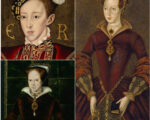
July 1553 was a month of three Tudor monarchs – Edward VI, Queen Jane and Mary I – but how did this come about?
In this talk, historian and author Claire Ridgway looks at what led to the events of July 1553 and particularly the actions that Mary took to stage her successful coup d’etat.
[Read More...] -
13 July – John Dee

Today is the anniversary of the birth of John Dee, the astrologer, mathematician, alchemist, antiquary, spy, philosopher, geographer and adviser to Elizabeth I and influential statesmen. He was born on 13th July 1527 in the reign of King Henry VIII.
Hear a few facts about John Dee in this edition of #TudorHistoryShorts…
[Read More...]


